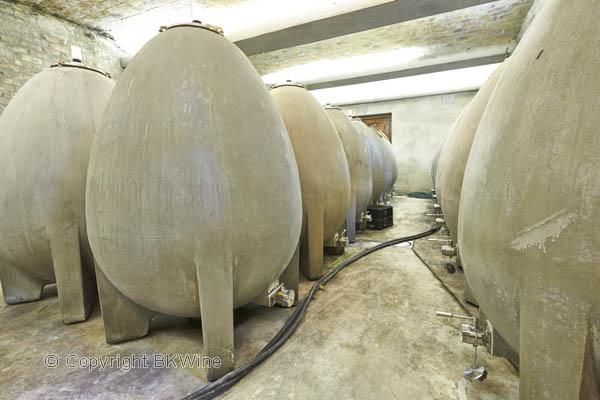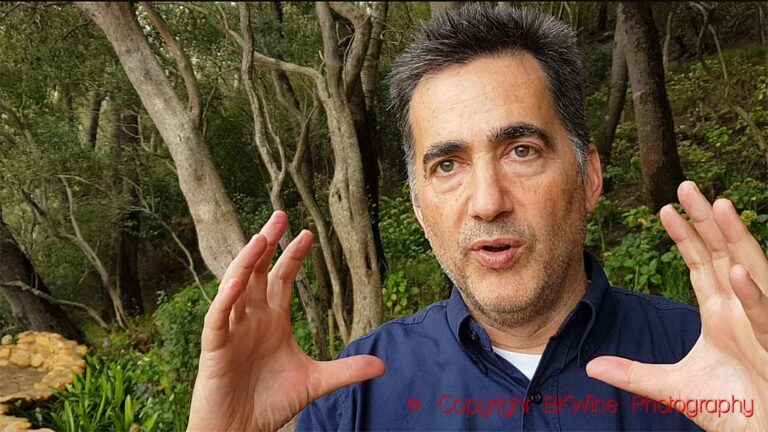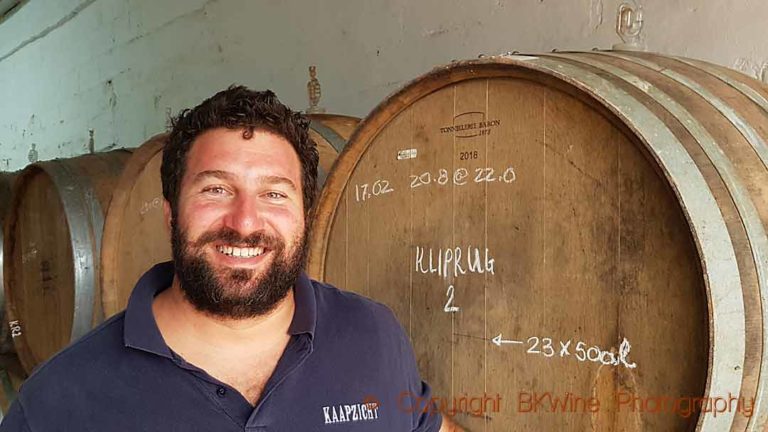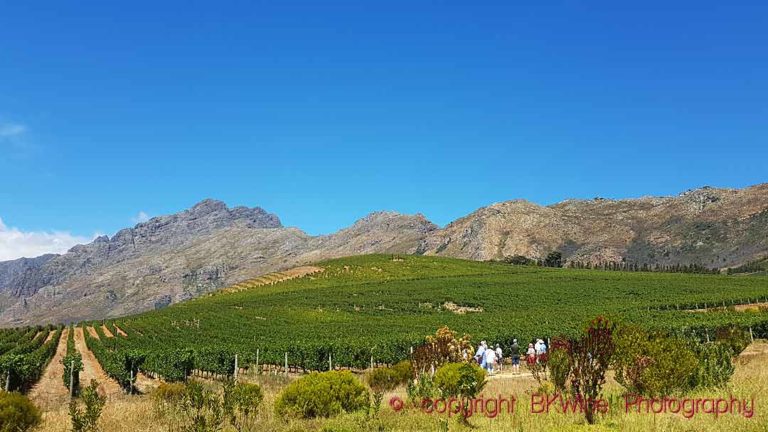Porcupines, baboons, wolf traps and not so long ago they actually saw traces of a leopard. There is evidently a lot of animals roaming around Boekenhoutskloof. But maybe the label with the seven chairs is better known to some of you?
Boekenhoutskloof’s wine labels are easy to remember. Maybe it is a bit more difficult to pronounce the name of the estate, [boo-ken-how-ts-clauf].
I had the occasion to visit Boekenhoutskloof on a recent wine tour to South Africa with BKWine.
We are as far east as you can get in the beautiful Franschhoek Valley in the South African wine lands. Boekenhoutskloof is an old winery, established in 1776. Kloof means gorge in Afrikaans and boekenhout is a beech, highly appreciated for furniture production. Seven traditional chairs made of boekenhout can be seen on the label of the estate’s best wines.
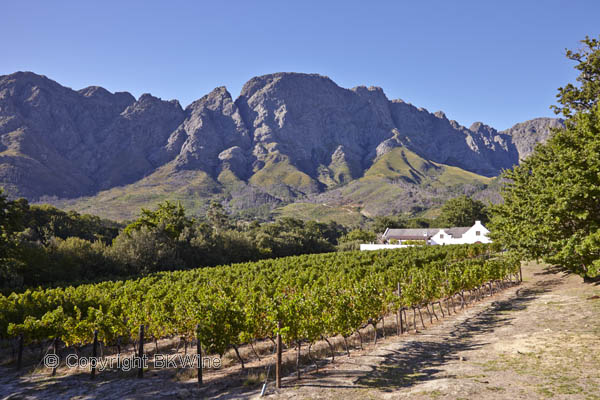
Boekenhoutskloof makes an interesting collection of wines, from everyday wines to more complex ones. 6 million bottles are produced annually and 42 % is exported. The grapes come from different parts of the Western Cape, not only from Franschhoek. Many grapes are sourced from Swartland, the somewhat desolate district a bit further north that has become hugely popular these last few years.
The Chocolate Block
The Syrah grapes for the prestige wine The Chocolate Block come from Swartland. What chocolate has to do with the wine I don’t actually know. Does the wine taste of chocolate? Not really. Perhaps there is a hint of chocolate on the nose, probably coming from the ageing in French oak barrels. But the wine is totally dry with just over 2 grams of residual sugar per litre in the 2012. Low residual sugar is a common feature for Boekenhoutskloof’s wines, something I greatly appreciate.
The Chocolate Block 2012 is made from 70% Syrah, 13% Cabernet sauvignon and 10% Grenache. The rest is Cinsault and Viognier. It has a good concentration and structure. There is tobacco, black pepper and other spices on the nose. There is fresh and appetizing feeling to the wine thanks to a good acidity and a generous fruit.
The syrah grapes come from old, non-irrigated vines (irrigation is otherwise quite commonplace in South Africa). The berries are small with a thick skin which gives a lot of colour. The wine is aged in French oak barrels for 18 months. It gets only a very light fining and filtration before bottling. Approx. price 25-30 euro.
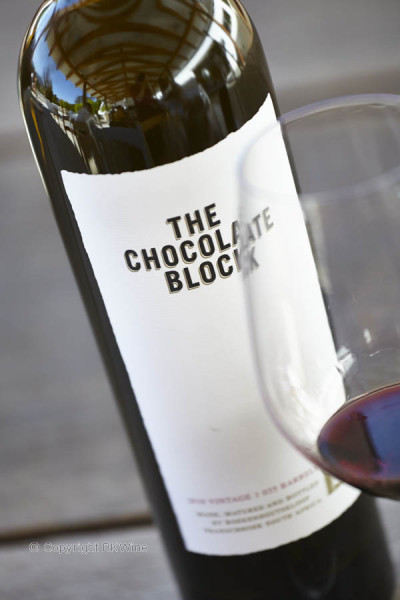
Porcupine Ridge
Boekenhoutskloof has had a great success worldwide with its Porcupine Ridge range of wines. The local porcupine can be found on the label and also on the property, primarily at night. Boekenhoutskloof wants to preserve the porcupine and its habitat and is funding a research project with this purpose. Also in other contexts, the estate is concerned about the environment. Boekenhoutskloof has initiated a collaboration with the neighbouring wine estates to facilitate the preservation of the indigenous vegetation called fynbos.
“We want to protect the environment,” says winemaker Shaun Meyeridricks. “We only use sulphur to combat fungal diseases in the vineyard, we use copper possibly once a year.”Using copper sparingly in the vineyard also has another advantage, in the cellar, copper destroys fermentation”, says Shaun. “If there are traces of copper in the cellar, fermentation will not start.” Interesting opinion that we have not previously heard so much about.
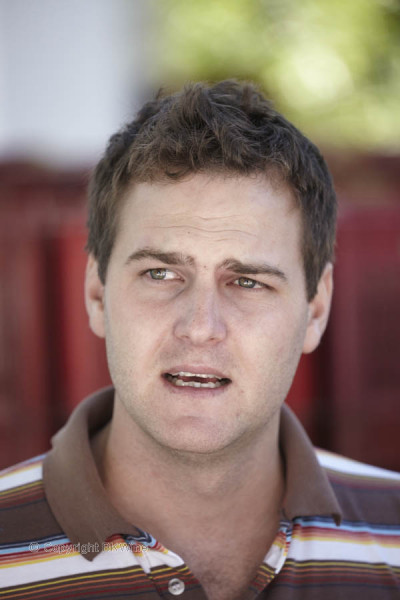
The Porcupine Ridge range consists of two white wines and two red. These are everyday wines of good quality. We tasted a red and white:
Porcupine Ridge Sauvignon Blanc 2013 has a rather subdued aromatic character with some pleasant citrus aromas and a good freshness.
Porcupine Ridge Syrah 2012 is a fruity wine with peppery aromas. It is a pleasant and easy to drink wine with good character. Approx. price 7-10 euro.
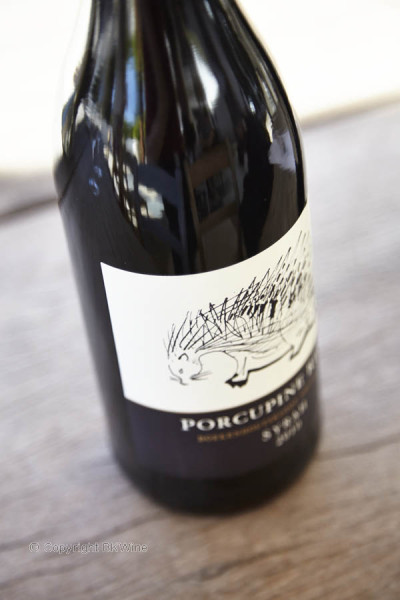
The Wolftrap
Franschhoek was certainly much wilder when the French first arrived here in the 1600s. Maybe there were wolves here. At Boekenhoutskloof they have, at any rate, found a wolf trap. And so, they named the middle range of their wines The Wolftrap.
The Wolftrap White 2013 is a blend of Viognier, Chenin Blanc and Grenache Blanc. Together, these grapes give spices, fruit, richness and freshness to the wine. 8 months in oak barrels adds additional complexity.
The Wolftrap Red 2013 is 60% Syrah from Swartland, 32% Mourvèdre and the rest is Viognier. The wine spends 8 months in oak barrels. Made in an easy to drink style with a good, savoury fruit and freshness. Some black pepper on the nose.
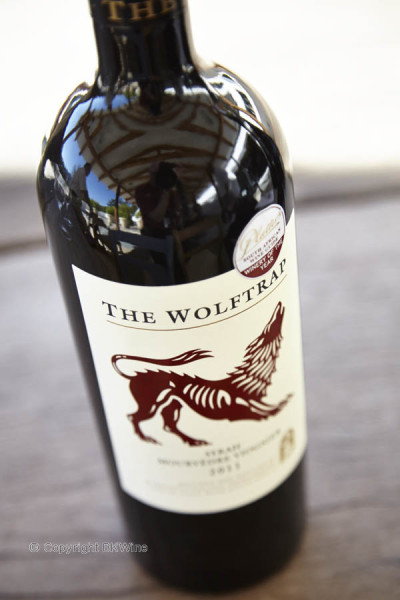
Prestige wines with chairs
The prestige range is called simply Boekenhoutskloof and now we have the seven traditional chairs made from boekenhout on the label.
The white Boekenhoutskloof is made from the Semillon grape and these wines are my absolute favourites. Semillon is the grape of Sauternes and also in dry white Bordeaux. But it is very little grown outside of France. Here at Boekenhoutskloof it gives very good results.
Boekenhoutskloof Semillon is made from very old vines that were planted here in Franschhoek already in 1899. The yields are very low, 3600 kilo per hectare (approx. 20 hl/ha). The wine is fermented in new oak barrels. Shaun says that they add 6-8 % of Sauvignon Blanc to increase the acidity, instead of adding tartaric acid.
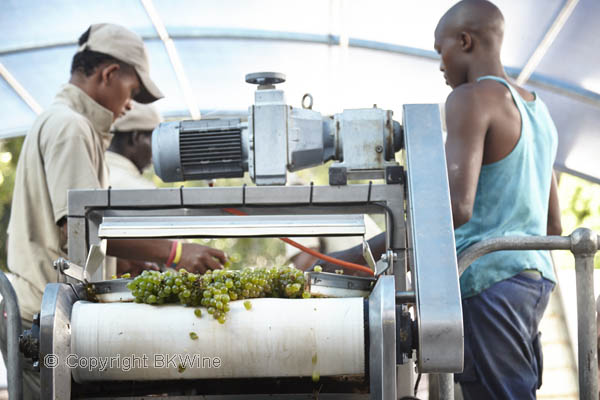
Boekenhoutskloof Semillon 2011 has a nose with citrus and peach aromas and also some flowers. There is great complexity on the palate. It is a full bodied wine with a fat texture and a very long aftertaste. Approx price 25-30 euro.
Boekenhoutskloof Semillon 2005 has even more “fatness” and body and shows that the wine has a great aging potential. There is a hint of bitter almonds and ripe apples and also some citrus. A very attractive wine.
Boekenhoutskloof Noble Late Harvest Semillon 2009 is a wonderfully sweet wine with intense aromas and a taste of dried apricot and some honey. It is full-bodied with good acidity and length. It is a wine made in very small quantities. The grapes for the 2009 were harvested in May/June (very late!). You have to be quick and harvest before the baboons start to eat the sweet grapes. Baboons are actually a big problem for some vineyards in South Africa. The wine spends two years in new barrels before bottling.
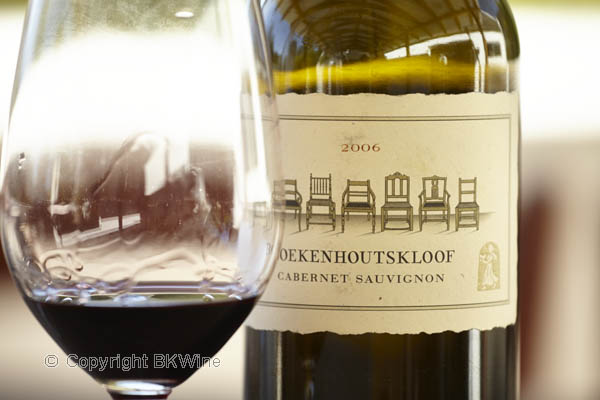
There are two red Boukenhoutskloof wines, one Syrah wine and one Cabernet Sauvignon.
Boekenhoutskloof Syrah 2011 is an elegant and very flavourful wine. There is a great intensity of aromas and fruit. On the nose you have black pepper, leather, and black currants. Good balance and good acidity. The grapes come from Wellington’s granite soil. They ferment with wild yeast and the wine gets a full 27 months in oak barrels.
Boekenhoutskloof Cabernet Sauvignon 2011 has good structure with tannins, acidity and plenty of fruit. The oak does not dominate too much despite the 27 months in 100% new French oak barrels. “Cabernet Sauvignon has such a good structure that it can support so many months in new oak” says Shaun. Approx. price 25-30 euro.
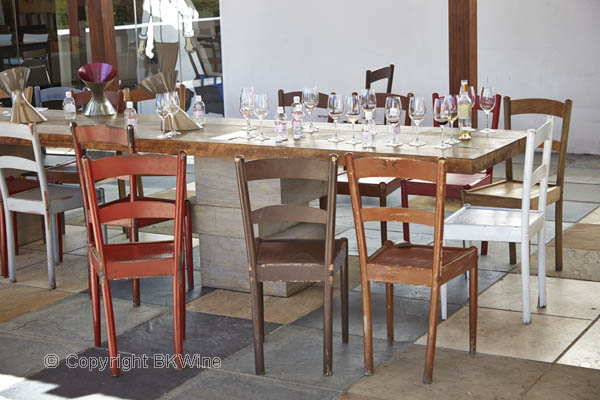
Before we leave Boekenhoutskloof we visit the cellar with Shaun. We are met by an impressive sight: 24 concrete egg tanks. “We use them for the white wines, mostly Grenache Blanc but also for Semillon and Sauvignon Blanc. We are very pleased with the results. Wines fermented in these tanks show a wonderful mouth-feel.” It’s a big investment, though, each egg tank cost 135,000 rand (approx. 10,000 euro).
We did not see any animals but we did sit on the chairs and we did taste some really good wines.
[box type=”info” style=”rounded” border=”full”]Boekenhoutskloof is one of the wineries that is often on the itinerary on BKWine’s wine tours to South Africa. You can join us on the next wine tour to South Africa to experience the magnificent wines and the delicious food in the exciting country! The next tour to South Africa will be in March.
Travel to the world’s wine regions with the wine experts and the specialist in wine tours.
A unique tour. A unique wine experience.[/box]
